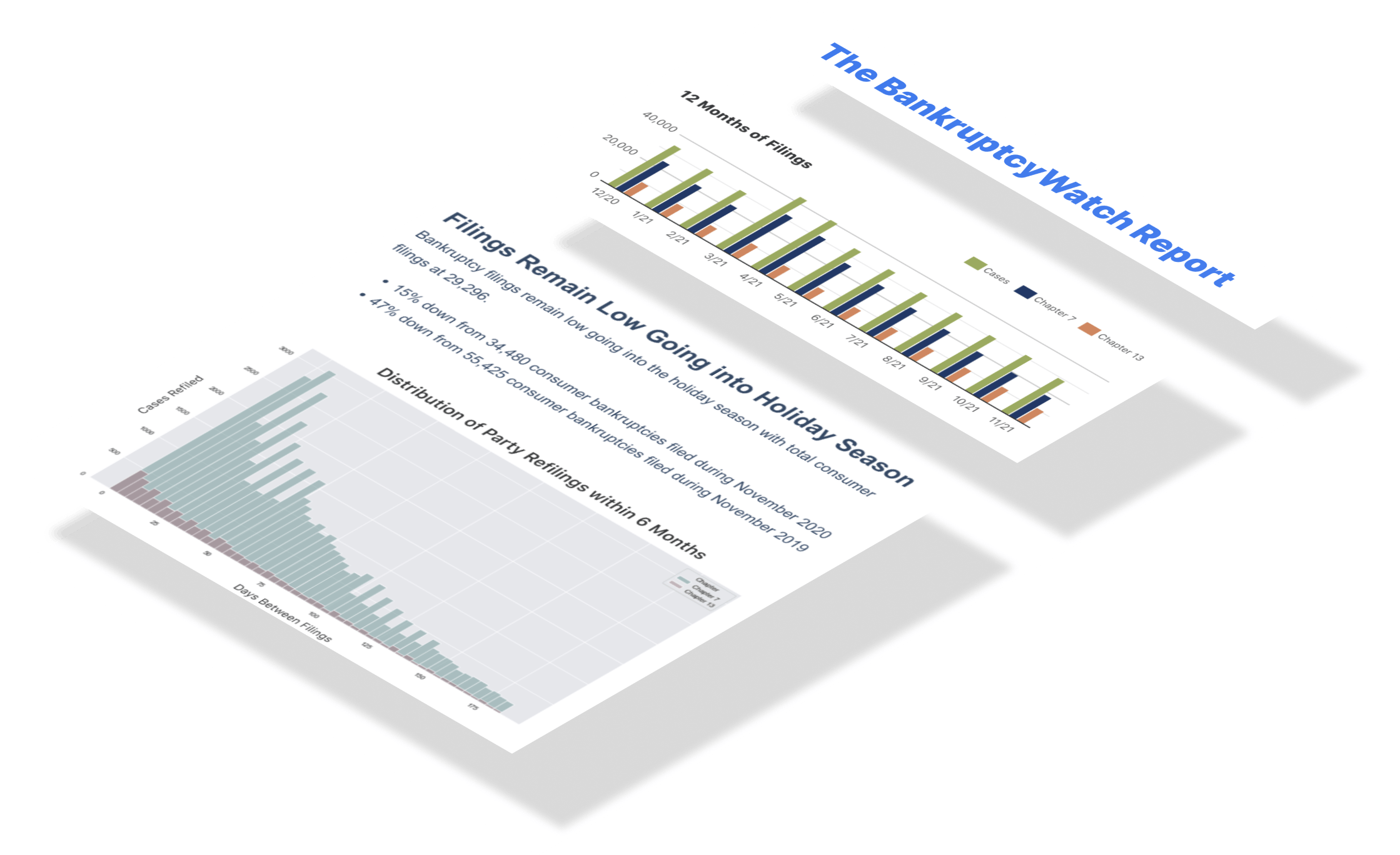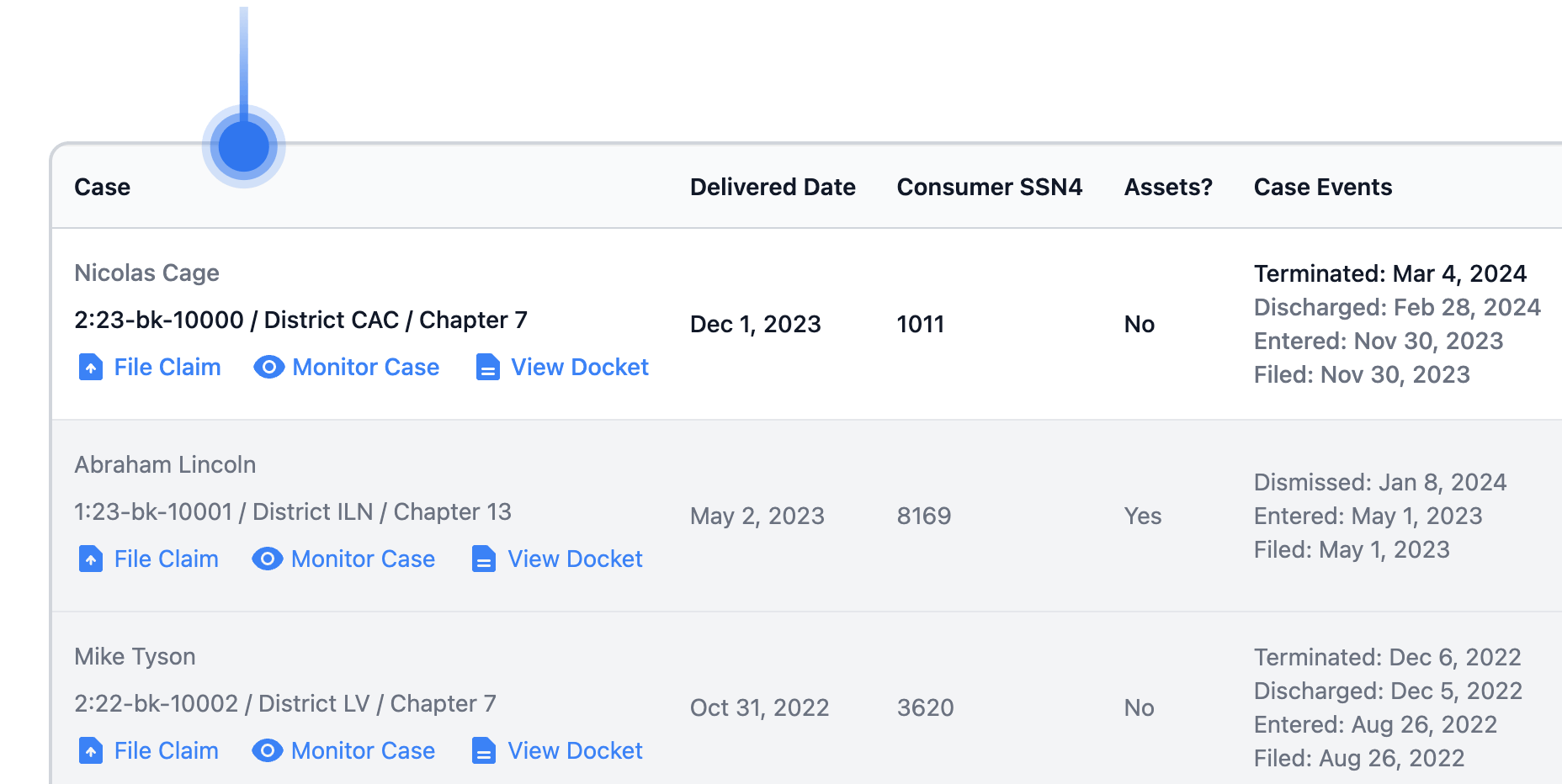Claude 4.0 Sonnet Extended Analysis of the Bankruptcy Statistics
1. Overview of this week's National filings. Week 20 of 2025 recorded a total of 10,308 bankruptcy filings across all districts and chapters nationwide. Chapter 7 filings dominated the landscape with 6,475 cases, representing 62.8% of all bankruptcy activity for the week. Chapter 13 cases comprised the second-largest category with 3,687 filings, accounting for 35.8% of the total national volume. Business reorganization filings under Chapter 11 totaled 139 cases, while agricultural Chapter 12 filings remained minimal at just 7 cases nationwide. The combined Chapter 11 and Chapter 12 filings represented only 1.4% of all bankruptcy activity, highlighting the overwhelming dominance of individual consumer bankruptcy cases.
2. An interesting fact about this week's filings. The ratio between Chapter 7 and Chapter 13 filings reveals a fascinating trend in consumer financial distress patterns, with Chapter 7 liquidations outnumbering Chapter 13 reorganizations by nearly 2-to-1 (6,475 vs 3,687). Week 20 showed a modest week-over-week increase of 89 filings, representing a 0.9% growth from the previous week's total of 10,219 cases. Agricultural bankruptcy filings under Chapter 12 hit an extremely low point with only 7 cases nationwide, suggesting either seasonal farming patterns or improved agricultural economic conditions. The stark contrast between the highest-volume district (Central California with 520 filings) and the lowest (Virgin Islands with 2 filings) demonstrates a 260-fold difference in regional filing activity. Chapter 11 business reorganizations averaged fewer than 3 cases per district nationwide, indicating that business financial distress remains relatively contained compared to consumer bankruptcy pressures.
3. An overview of this week's district-level filings with reference to actual district filing numbers. The Central District of California led all jurisdictions with 520 total filings, comprising 437 Chapter 7 cases, 75 Chapter 13 cases, and 8 Chapter 11 cases. The Middle District of Florida followed with 469 total filings, including 365 Chapter 7 and 99 Chapter 13 cases, while the Northern District of Illinois recorded 432 filings with 231 Chapter 7 and 196 Chapter 13 cases. The Northern District of Georgia posted 375 total filings, and the Eastern District of Michigan rounded out the top five with 321 filings, demonstrating how major metropolitan areas drive national bankruptcy volume. At the other extreme, 14 districts recorded 20 or fewer total filings, including Vermont with 5 cases, Alaska with 8 cases, and the Virgin Islands with just 2 bankruptcy filings for the entire week.
4. Geographic (district) disparities in filings. Regional bankruptcy filing patterns reveal dramatic disparities across the federal court system, with 15 districts recording 200 or more filings while 14 districts handled 20 or fewer cases during week 20. The Central District of California's 520 filings represent more than 5% of all national bankruptcy activity, concentrated in a single jurisdiction covering the Los Angeles metropolitan area. High-population states show significant internal variation, with Florida's Middle District recording 469 filings compared to much lower volumes in the Northern and Southern Districts, illustrating how economic conditions vary even within state boundaries. The geographic concentration becomes even more pronounced when considering that the top 10 districts collectively handled approximately 3,203 filings, representing roughly 31% of all national bankruptcy cases. Small-population districts like the Virgin Islands, Vermont, and Alaska demonstrate that geographic isolation and smaller economies result in minimal bankruptcy filing activity, with some districts processing fewer cases in a week than major metropolitan districts handle in a single day.
5. Current year focus. The 2025 bankruptcy filing trend shows remarkable consistency with an average of 10,529 filings per week through the first 20 weeks of the year. Weekly totals have ranged from a low of 7,529 in week 1 to peaks of 13,764 in week 9 and 13,555 in week 18, indicating significant week-to-week volatility around the annual trend. Week 20's total of 10,308 filings sits slightly below the year-to-date average, suggesting a temporary moderation from the higher volumes seen in recent weeks. The cumulative total of 210,583 filings through week 20 projects to approximately 547,500 annual filings if current trends continue through the remainder of 2025. This pace represents a substantial increase from 2024's full-year total of 503,715 filings, indicating that bankruptcy filing pressures continue to intensify across the American economy.
6. Comparative analysis with previous years. Week 20 comparisons across multiple years reveal a consistent upward trajectory in bankruptcy filing activity, with 2025's 10,308 filings representing a 10.3% increase over 2024's corresponding week total of 9,342 cases. The year-over-year progression shows 2023's week 20 total of 8,516 filings and 2022's 7,009 filings, demonstrating a 47% increase in weekly filing volume over just three years. Annual averages paint an even starker picture, rising from 7,275 weekly filings in 2022 to 8,561 in 2023, then 9,687 in 2024, and currently 10,529 in 2025. This represents a 44.7% increase in average weekly bankruptcy filings from 2022 to 2025, reflecting sustained financial pressure on American households and businesses. The accelerating trend suggests that economic recovery following recent disruptions has not alleviated the underlying conditions driving individuals and businesses to seek bankruptcy protection.
7. Analyzing the filings per capita. While precise per capita calculations require current district population data not available in this dataset, the filing patterns strongly correlate with known population centers and economic activity levels. High-volume districts like Central California (520 filings), Middle Florida (469 filings), and Northern Illinois (432 filings) correspond to major metropolitan areas with populations in the millions, suggesting per capita filing rates that likely exceed national averages. Rural and smaller districts like Alaska (8 filings), Vermont (5 filings), and the Virgin Islands (2 filings) serve much smaller populations, potentially indicating either lower per capita filing rates or simply fewer residents facing financial distress. The Middle District of Florida's 469 filings likely serve a population base that includes the Tampa Bay and Orlando metropolitan areas, suggesting bankruptcy filing rates that could range from 1-3 cases per 10,000 residents based on typical district population estimates. Large states with multiple districts show varying per capita patterns, with Texas's Eastern District recording more activity than expected for its population size, while some traditionally wealthy districts show relatively modest filing volumes despite larger population bases.
8. Analyzing the changing filings per capita. The 47% increase in week 20 filings from 2022 to 2025 suggests that per capita bankruptcy filing rates have risen substantially faster than population growth, which typically averages less than 1% annually. Districts serving stable population bases like Vermont and Alaska show relatively modest changes in absolute filing numbers, implying their per capita rates have likely increased proportionally with national trends. Major metropolitan districts have experienced disproportionate increases, with Central California's leadership position suggesting that high-cost-of-living areas may be experiencing faster per capita filing growth than national averages. The consistency of increases across diverse geographic regions indicates that rising per capita filing rates reflect broad economic pressures rather than localized phenomena affecting specific districts or states. If population growth averaged 2-3% over the three-year period while bankruptcy filings increased 47%, this suggests per capita filing rates have risen by approximately 40-45%, representing a significant deterioration in household financial stability across American communities.
9. Forecast the expected filing numbers for the rest of the year. Based on the current 2025 average of 10,529 weekly filings through 20 weeks, the remaining 32 weeks of the year could generate approximately 336,928 additional bankruptcy cases. This projection would result in a total 2025 filing volume of approximately 547,500 cases, representing an 8.7% increase over 2024's 503,715 total filings. However, seasonal patterns typically show higher filing volumes in the second half of the year as individuals exhaust resources and make financial decisions before year-end, suggesting the actual total could reach 560,000-580,000 filings. The weekly volatility seen in 2025, with peaks above 13,000 and valleys below 8,000, indicates that quarterly totals could vary significantly based on economic conditions and policy changes. Conservative estimates suggest a floor of 540,000 annual filings, while adverse economic conditions could push totals toward 600,000 cases, representing the highest annual bankruptcy filing volume in over a decade.
10. Forecast the trends of increasing filings after 2024. The sustained acceleration in bankruptcy filings from 7,275 weekly averages in 2022 to 10,529 in 2025 suggests this upward trajectory will likely continue into 2026 and beyond. Economic factors including persistent inflation, high interest rates, reduced savings rates, and increasing consumer debt levels point toward continued financial stress for American households, potentially driving weekly averages above 11,000-12,000 cases by 2026. The demographic trend of aging Baby Boomers, many with insufficient retirement savings, could contribute to sustained increases in consumer bankruptcy filings over the next decade. Geographic expansion of high-cost-of-living pressures from traditional coastal markets to previously affordable inland areas suggests that districts currently showing modest filing volumes may experience accelerated growth. Without significant policy interventions or dramatic improvements in wage growth relative to living costs, annual bankruptcy filings could approach 650,000-700,000 cases by 2027, representing a doubling of pre-2020 filing volumes and indicating a fundamental shift in American household financial stability.






